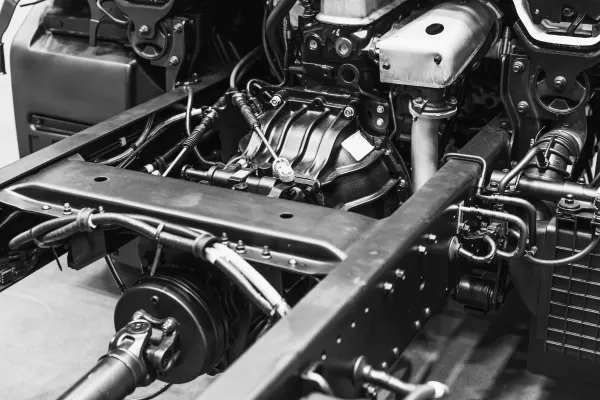Important Considerations for Ensuring High Quality and Longevity in Made Use Of Engines
When thinking about the acquisition of a used engine, ensuring its quality and durability requires a complex approach. Upkeep history is a crucial element, as it supplies understanding into the engine's previous care and potential future reliability. Past documents, a detailed assessment of physical elements-- such as belts, hose pipes, and seals-- can expose surprise problems. Performance testing is additionally important, providing a photo of the engine's functional performance. Recognizing the subtleties of these analyses and their ramifications can be complex. What are the vital strategies that can be employed to navigate this intricate examination process successfully?
Engine History Assessment
In the realm of used engines, an extensive engine background assessment is extremely important to ensuring quality and reliability. Comprehending an engine's past can offer vital insights into its performance capacities and potential future long life. A thorough history evaluation includes a number of crucial facets that play a significant duty in assessing an engine's condition. Maintenance documents are essential. Normal upkeep, consisting of oil adjustments, filter substitutes, and arranged tune-ups, indicate that the engine has been well-cared-for, decreasing the possibility of unanticipated failings.
Additionally, reviewing any type of background of fixings or replacements is vital. Engines that have actually gone through considerable repair work may have underlying concerns that might resurface. Recognizing the context of such repairs, whether due to producing defects or owner neglect, is crucial in forming a comprehensive assessment. Moreover, checking out the engine's gas mileage can serve as an indicator of wear and tear. Reduced gas mileage engines are normally preferred, but it is additionally crucial to consider exactly how those miles were collected. An engine used largely for long-distance freeway driving may be in far better problem than one based on constant stop-and-go city traffic.
Basically, an extensive investigation into an engine's background is necessary for making educated acquiring decisions. used engines for sale.
Comprehensive Inspection Guide
While comprehending an engine's history offers useful context, an extensive examination is the next step to guarantee its existing condition aligns with historic information. The assessment should start with a visual analysis, checking for signs of leaks, rust, and uncommon wear. Check the outside for oil spots or coolant marks, which may indicate underlying issues.
Following, examine the engine's placing system for any kind of loosened bolts or problems that can impact efficiency. Pay very close attention to the condition of belts and hoses, as these components are essential for optimal engine capability. Analyze for splits, fraying, or any kind of indications of wear and tear.

Determining Put On and Tear
Acknowledging signs of damage is critical for evaluating a used engine's long life and dependability. It involves a careful evaluation of numerous engine parts to identify their current state and potential future performance. Usual indications consist of noticeable corrosion, which can impact metal components and endanger architectural honesty. Rust on or around the engine block, cyndrical tube heads, and exhaust manifolds is particularly concerning.
An additional important facet is evaluating the engine's seals and gaskets. Additionally, irregular noises during engine procedure, such as knocking or ticking audios, might view website show interior damages or excessive wear on moving components like pistons or bearings.
The condition of belts and hose pipes is equally essential, as they play a crucial function in the engine's overall feature. Split or torn belts and fragile tubes are indicators of maturing that might result in engine failure if overlooked. Analyzing the oil problem and filter can provide understandings right into previous upkeep practices, as unclean oil or stopped up filters recommend overlook and sped up wear.
Performance Screening Essentials
Reviewing the wear and tear of engine components sets the stage for a comprehensive assessment via efficiency testing. Performance testing acts as a vital measure in establishing the functional honesty of an utilized engine. By simulating real-world problems, it analyzes the engine's capacity to supply power efficiently and dependably. Key metrics consist of horsepower, torque, gas performance, and discharges levels. This data offers useful understandings into the engine's existing performance and assists determine potential concerns that may not be quickly noticeable.
Using dynamometers is a typical method in performance screening. These devices gauge the engine's output throughout different conditions, supplying a detailed profile of its capability. In addition, on-road testing complements dynamometer analyses by observing engine habits under common driving circumstances, guaranteeing it satisfies the required requirements for both security and performance.
These devices assess engine monitoring systems, determining mistakes in electronic elements that could influence performance. Comprehensive screening not just validates the engine's functional condition however also help in projecting future maintenance needs.
Maintenance and Care Tips
Proper maintenance and care are critical to lengthening the life expectancy of an utilized engine and ensuring its regular performance. Normal oil changes are vital; using the supplier's recommended oil kind and grade can stop extreme deterioration. Additionally, oil filters need to be replaced simultaneously to maintain optimal lubrication and tidiness within the engine.
Keeping an eye on fluid levels, including coolant, transmission fluid, and brake liquid, is essential. Making sure these fluids go to appropriate degrees helps avoid overheating and Continued various other mechanical issues. Evaluating belts and hoses for signs of wear, such as fractures or fraying, can avert possible failures that might result in pricey repair services.
Routine evaluation of the air filter is likewise needed, as a tidy filter ensures reliable airflow and burning, therefore maximizing engine performance. Stimulate plugs ought to be checked and changed when required to preserve effective gas combustion and avoid engine misfires.
Lastly, regular diagnostic checks making use of specialist tools can recognize prospective problems before they end up being substantial issues. By sticking to these maintenance and treatment pointers, used engine owners can guarantee their engines remain dependable, efficient, and efficient in performing well over an extended duration.
Conclusion
